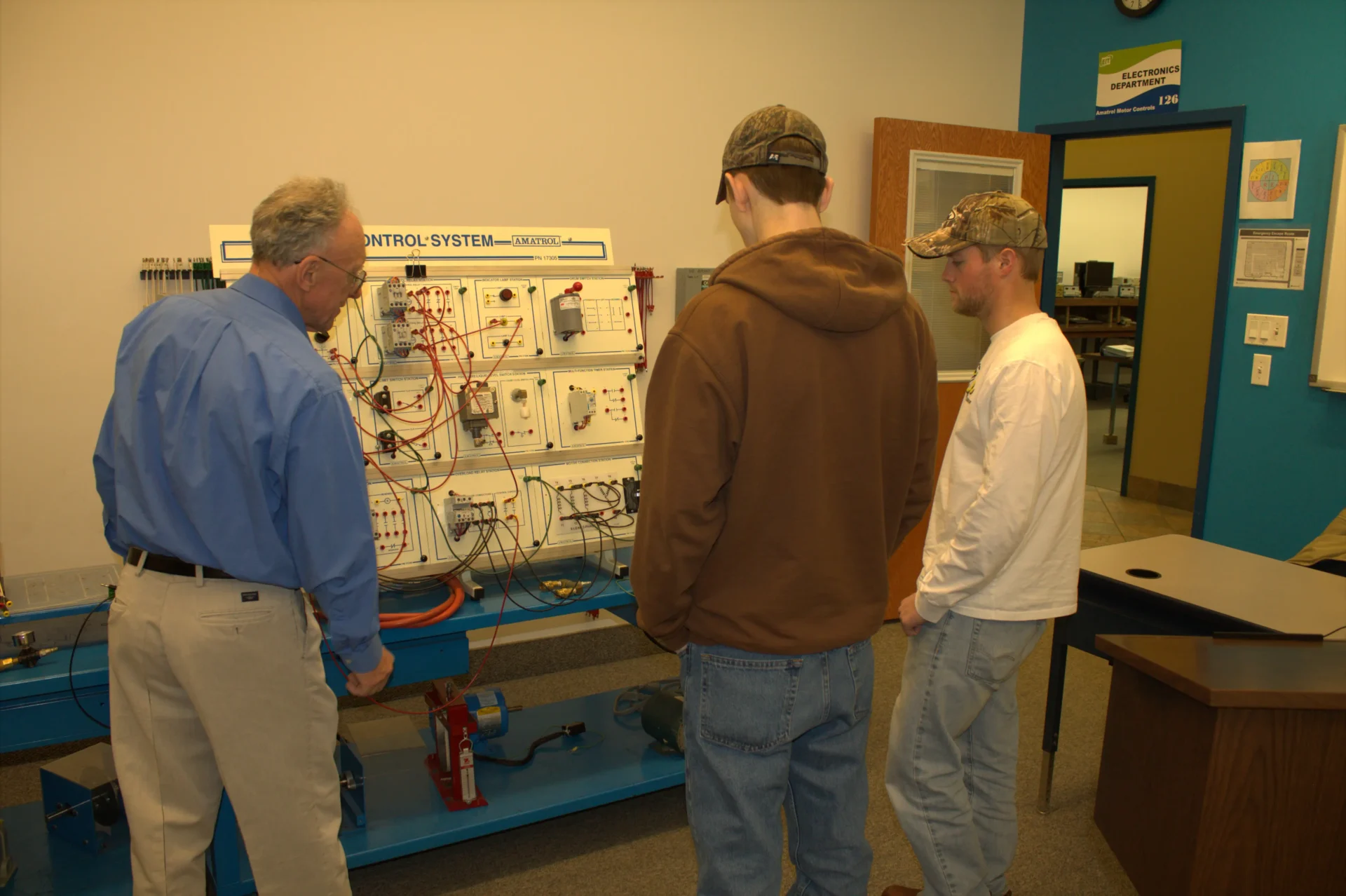From building phones to assembling cars and producing consumer packaged goods, there is a constant drive to automate every step of the manufacturing process. Machines are capable of producing more, have an increased tolerance level, and have a higher quality level of craftsmanship when it comes to repetitive processes.
Programmable logic controllers (PLCs) were created in the last century to meet the demand for improved automation. At their most basic level, PLCs are specialized computers designed to control machines and processes.
What is a Programmable Logic Controller?
A PLC is an industrial-grade digital computer designed to perform control functions commonly used for commercial and industrial applications. PLCs can run without interruption 24/7/365, and they were created as a cost-effective alternative to relay-based systems.
PLCs have customized instructions to perform a particular task. They’re useful for repeatable processes because they have no mechanical parts, and they can gather information.
History of PLCs
Industrial automation began long before PLCs. In the early to mid-1900s, automation was typically done using complicated electromechanical relay circuits. This method required lots of relays, wires, and space, and they were difficult to modify.
PLCs have largely replaced mechanical relays, drum sequencers, and cam timers. They take up less space, perform more complex tasks, and are more customizable than these older mechanical technologies.
The first PLC was invented by Dick Morley in 1969 for General Motors, and it performed uninterrupted for 20 years before it was retired.
Basic Components of a PLC
A PLC is composed of a few basic parts:
- A power supply
- A central processing unit (CPU)
- Input/output cards (I/O)
- A backplane or rack where the I/O cards are placed
The backplane creates an electrical connection between all the separate components. This electrical connection includes both power and communication signals. Many PLC manufacturers use proprietary communication protocols on the backplane so that I/O can securely talk to the CPU.
1. Power Supply
The power supply accepts either 120VAC or 24VDC depending on the application and the circumstances of the installation. The voltage travels down the backplane, providing power for the CPU and I/O modules, both of which come in the form of cards. These cards can be quickly added or removed from their slot in the carrier.
The power supply for the CPU does not provide power to the field devices, such as the sensors and coils. This power supply connection must be directed to the cards separately.
2. Central Processing Unit (CPU)
The CPU is the “brain” of the PLC and what makes it a computer. Input signals come from the I/O cards, and the PLC’s logic programs make decisions based on the signals. If necessary, the CPU then commands outputs to turn on and off and signals and conditions change.
Logic programs may include advanced functions, such as math operations, timing, counting, and sharing information via modern network protocols.
3. I/O Cards
Sensors, buttons, switches, relays, solenoids, and networked devices share information with I/O signals connected to screw terminals on the I/O cards. These cards can be chosen based on the needs of each machine and facility.
In some smaller PLCs, the I/O terminals are not modular cards but are rather installed right on the side of the PLC.
Because I/O device construction is highly varied, there is a wide range of discrete and analog modules, with terms like “sourcing” vs. “sinking” and “voltage” vs. “current” for analog models.
Ready to dive into PLCs? Discover our Program!
Our comprehensive Electronics Program is designed to equip you with the knowledge and skills needed to excel in the world of Programmable Logic Controllers.
How Do PLCs Work?
PLCs can be described as small industrial computers with modular components designed to automate control processes. They are the controllers behind almost all modern industrial automation. Most PLCs have a processor (CPU), inputs, and outputs.
PLCs take inputs, perform logic on the inputs in the CPU, and then turn on or off outputs based on that logic.
Here are some examples of how PLCs can work in industrial settings:
- The CPU monitors the status of the inputs, e.g. “switch on,” “proximity sensor off,” “valve 40% open”
- The CPU takes the information that it gets from those inputs and performs logic on the inputs
- The CPU operates the output logic, e.g. “turn off motor,” “open valve,” etc.
Advantages of a PLC System
PLCs are capable of performing many more complex applications than hard-wired control systems. PLC systems and electronic communication lines replace much of the interconnecting wires required by hard-wired control systems.
Here are some more advantages of PLC systems compared to hard-wired systems:
- They’re smaller
- It’s easier and faster to make changes to them
- They have integrated diagnostics and override functions
- Their diagnostics are centrally available
- Their applications can be immediately documented
- Their applications can be duplicated faster and less expensively

An Introduction to Programmable Logic Controllers
Become an Electronics Technician at EIT
If you’re interested in working on PLCs to help improve commercial and industrial processes, consider enrolling in Erie Institute of Technology’s Electronics Technician Training Program. In this 12-month program, you’ll learn how to install, troubleshoot, maintain, and repair electronic devices.
Upon completion of this program, you’ll be prepared to work on today’s high-tech electronic devices in countless industries. You can also choose to receive further, specialized training in Biomedical Equipment Technology or Industrial Automation & Robotics Technology.
Apply online today or visit our website to learn more about our programs.
Author Bio

Ross Aresco
CFO
Ross Aresco is the CFO of Erie Institute of Technology. Erie Institute of Technology (EIT) is an Erie Pennsylvania technical/trade school providing training programs for medical, computer, electronics, manufacturing, and technology careers. EIT offers programs in many different areas to suit your interests and talents.
